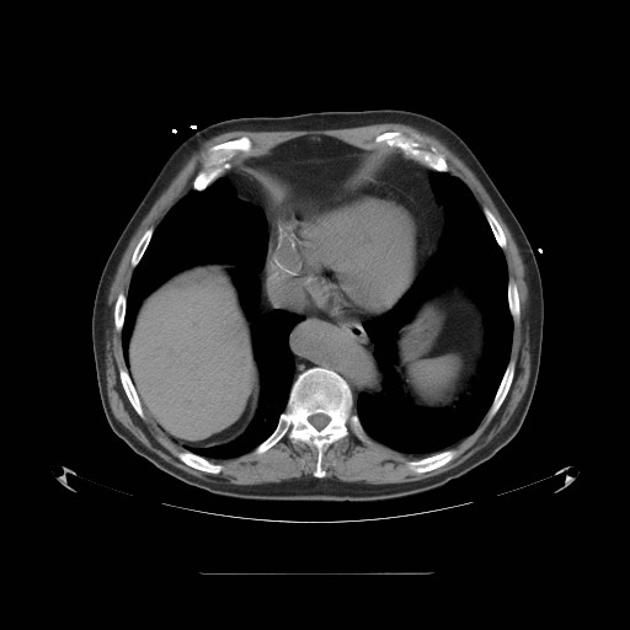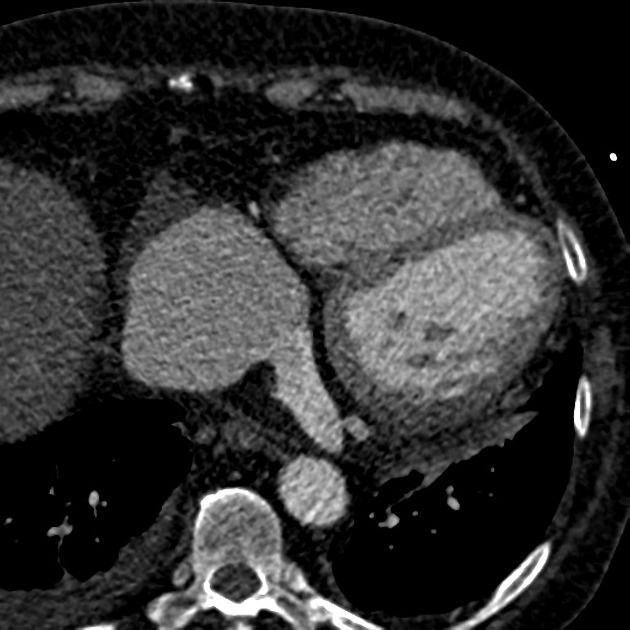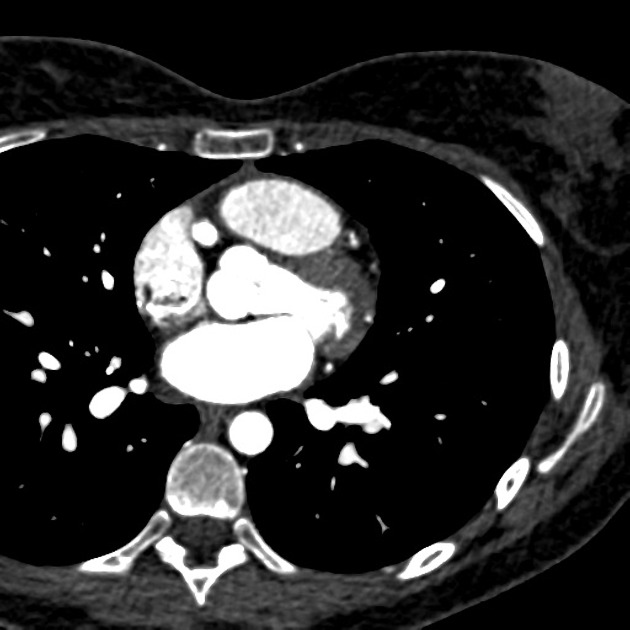Coronary artery aneurysms are an uncommon, predominantly incidental finding.
On this page:
Epidemiology
Coronary artery aneurysms are most common in men 3, likely reflecting the increased rates of atherosclerosis in men compared to women. Prevalence varies in the literature between 0.1-5% 4.
Clinical presentation
Most coronary artery aneurysms are asymptomatic. They can be associated with cardiac murmurs or present with chest pain or congestive cardiac failure.
Pathology
Coronary artery aneurysms are defined as a focal dilatation of the coronary artery by at least 50% compared to a nearby artery or adjacent arterial segment and involve <50% of the artery length 2,4. They can be classified by 4
type: true or false aneurysms
shape: saccular or fusiform
aetiology (see below)
The term coronary artery ectasia is applied when there is dilatation but it involves >50% of the artery length 4. The giant coronary artery aneurysms subtype measure >5 cm and >0.8 cm in the adult and the young paediatric populations respectively 6.
Aetiology
Pathologically, coronary artery aneurysms can be classified into three groups 6:
atherosclerotic: most common (50%)
-
inflammatory
vasculitis, e.g. Kawasaki disease
mycotic, e.g. syphilis
-
non-inflammatory
congenital (~17%)
connective tissue disorders, e.g. systemic lupus erythematosus
trauma
iatrogenic, e.g. stent placement
drug-related, e.g. cocaine use
Associations
Coronary artery aneurysms may be associated with coronary arteriovenous fistulas to either cardiac veins or cardiac chambers.
Radiographic features
Imaging modalities used in evaluating coronary artery aneurysms include transthoracic echocardiography, ECG-gated CT angiography, MRI and/or MR angiography, and angiographic cardiac catheterisation.
Role of imaging
depiction of coronary artery anatomy
detection of coronary artery aneurysms
-
evaluation of aneurysm shape and structure
morphology (fusiform or saccular)
aneurysm diameter
wall calcification
luminal thrombosis
presence of associated stenosis
origin and termination
monitoring of growth rate
-
exclude potential complications
myocardial perfusion abnormalities
fistula formation
extrinsic mass compression
rupture and haemopericardium
Treatment and prognosis
There is no established treatment for coronary artery aneurysms with medical and surgical options available 4. The five-year survival of coronary artery aneurysms is ~70% 3,4.
Differential diagnosis
The differential diagnosis includes:
aneurysm of a surgically placed coronary arterial or venous graft
neoplasms of the heart, pericardium, or mediastinum










 Unable to process the form. Check for errors and try again.
Unable to process the form. Check for errors and try again.